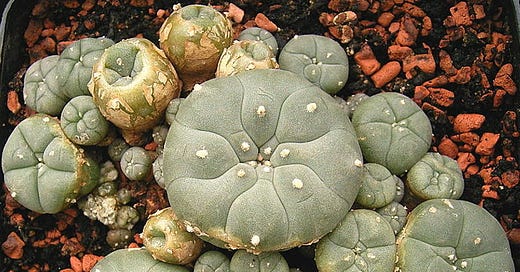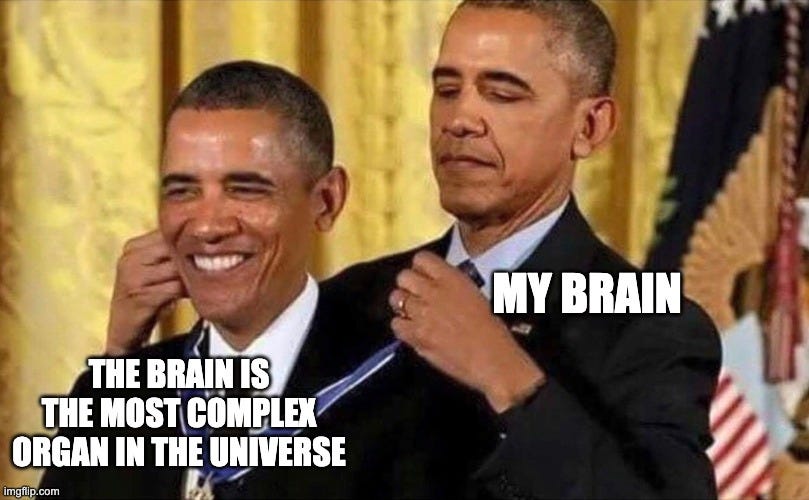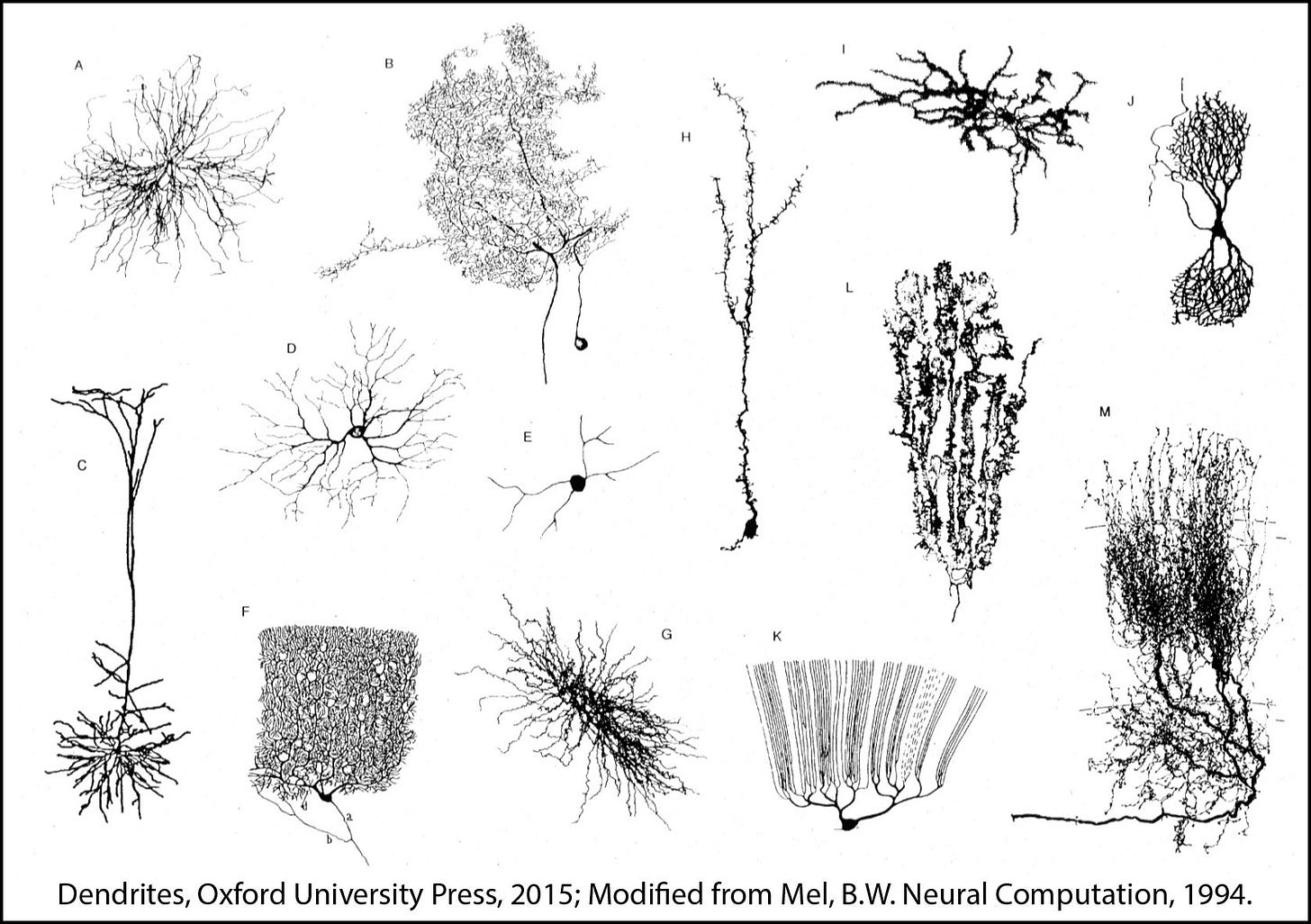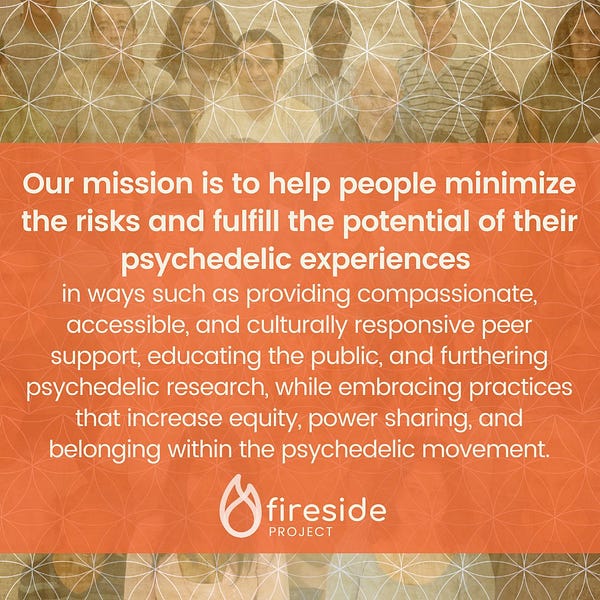The Biology of Psychedelics: Part I
"Good mescaline comes on slow. The first hour is all waiting, then about halfway through the second hour you start cursing the creep who burned you, because nothing is happening...and then ZANG!"
-Hunter S. Thompson
In today’s newsletter you will learn:
How psychedelics are absorbed into the bloodstream
The structure and function of neurons
A Vision Emerges
As you meditate in the desert, a soft, warm wind spins dry sand and creosote aromas past your senses. The ruffling of your hair moves down the back of your neck, as a presence emerges in your periphery. It seems to have a message for you. You concentrate on the voice, and it transmits a question:
“If a mescaline-containing cactus grows in a desert, but no human ever consumes it, is the mescaline still psychedelic?”
Your curiosity is engaged by this sudden inquiry, and you begin to focus on it. As you expend more mental resources to this question, the philosophizing phantom fades away. You blink your eyes open. As the sun sets purple on the horizon, you spot a small peyote cluster on the ground in front of you. Feeling its sacredness and knowing its vulnerable conservation status, you thank it for guiding your meditation. On your hike home, you ponder what answer you will have for it next time.
The Biology of Psychedelics
The question that the peyote-spirit posed to you begs consideration of what it means for a substance to be psychedelic. Yes, certain molecules have properties that can interact with our brains and shatter our conception of reality. But, these are just molecules, right? They are not giving us these visions, they are simply nudging our minds a bit, tipping us onto a different plane. How? Is our sober conception of reality really so fragile that a bit of mescaline is all it takes to dissolve it?
The chemical properties we learned about last week are only meaningful to us because of the effect they have on our minds. These effects, however, only exist because our brains are capable of them in the first place. Our brains are complex, but they are biological. Understanding psychedelics requires us to understand this biology, and there is a lot of biology to cover. This Monday’s newsletter will be Part I of II on the Biology of Psychedelics. Let’s jump in.
Down (or up?) the Hatch
Animal brains are attached to a long jumbled tube that runs from the mouth to the butt. The human is a curious and inventive animal that has developed many different techniques for getting substances out of that tube and into our brains. The most common way to consume a mind-altering substance is to drink or eat it, as one usually does with mescaline. We also snort powders, smoke dried plant material, put tabs on our tongues, and in some instances, we insert our chosen mind-delicacies into our keisters. Whatever the strategy, the goal is to absorb a substance into our bloodstream, which carries it to our brains.
We are able to take in psychedelic molecules so easily because certain parts of our bodies are built to absorb small molecules like psychedelics. Our lungs, for instance, are giant sponges with lots of tunnels that repeatedly branch into smaller and smaller tunnels. Our lungs are so branched that their collective surface area is about equal to the area of a tennis court. This surface area is also available to absorb other molecules that we breathe in. Our mouths, nasal cavities, and intestines are also places we can absorb substances. They each have similar adaptations as the lung, namely, increased surface area, a rich blood supply and concentration gradients which induce a sort of molecular suction effect. Once in the blood, psychedelic molecules disperse all around the body, including up, up, up to the brain.
In the Belly of the Brain
Up until now, the journey of a psychedelic molecule is just like any other molecule that we might absorb by eating food or breathing air. The point where psychedelic molecules transcend normality is in the brain, where they interact with our neurons, inducing global brain activity shifts that we experience as altered states of consciousness.
The brain is the most complex piece of matter that we are aware of, and we are at the dawn of understanding just how impactful psychedelic molecules can be within it. This week we’ll just go over some basics about how neurons function under “normal” conditions. Next week we’ll introduce our favorite psychedelics to the system to see how they impact the brain at the molecular and global level.
Teaching neurons to your neurons
Neurons are the cells in our brain, spinal cord, and the nerves with which we sense and react to the environment around us. There are many types of neurons, but they all have the same basic structure. On one end, they have branches called dendrites that pick up signals from the environment or other neurons. In the middle they have a cell body with all of the standard organelles, such as nuclei and mitochondria. On the other end, they have a long arm called an axon which carries electrical signals and releases neurotransmitters into a synapse.
A synapse is an extremely small gap between the axon of one neuron and the dendrite of another. Neurotransmitters released into this gap diffuse to the neighboring dendrite, and bind to its receptors.
When a receptor is activated, two things can happen:
If the receptor is linked to an ion channel, the channel will open, allowing ions to flow into the cell. Ions are individual atoms that carry either a positive or negative charge. You can think of their movement into a cell as making it more positive or negative, depending on the ion.
If the receptor is linked to a G-protein, then the G-protein will activate, causing a few different events in the cell. G-proteins are sort of like wild cards; when they activate, they could either open an ion channel, or initiate some chemical chain of events in the cell that could do something crazy like turn genes on and off.
Neurons typically receive many different signals at once. These signals can open both positive and negative ion channels. When enough positive ion channels are opened and the cell reaches a certain electrical state, it fires an action potential along its axon. An action potential is an electrical wave produced by the rapid movement of ions across the axonal membrane. When the action potential reaches the end of the axon, it causes the release of neurotransmitters into the next synapse. This whole process then repeats in the next neuron.
Neurons are arranged in these extremely complex circuits throughout our entire brain. Neurons in different regions of our brain have different structures, different sizes, different neurotransmitters, different receptors, and different activity levels. Nevertheless, our brain regions are all connected, front to back, side to side, top to bottom, etc. From neuronal circuits emerge our thoughts, feelings, desires, emotions. These excitable cells also control the movement of our limbs during a run, the squelching of our stomachs before a meal, and the tracking of your eyes across this screen.
Take today to appreciate the sheer complexity of it all, because that appreciation also works out a circuit somewhere in your noggin. Next week we’ll swan dive into the interactions between psychedelics and neurons. We shall see what vision emerges.
Extra Credit:
⚡️How neurons conduct electrical signals [VIDEO]
🧠 The neurobiology of psychedelic drugs: implications for the treatment of mood disorders [ARTICLE]
From around the psychosphere
🧪 Science & Culture:
Hamilton Morris on Duncan Trussell’s Family Hour talking about his final season of Hamilton’s Pharmacopeia and his chemistry plans for the future
⚖️ Ethics:
Exaggerating Harmful Drug Effects on the Brain Is Killing Black People by Dr. Carl Hart
Everything else said and written by Dr. Carl Hart. He is an excellent scientist, writer, speaker, and role model to learn how we can achieve a free, just, and equitable society.
💸 Harm Reduction:
Fireside Project - A must visit. This group is developing an amazing resource, a confidential phone line, for challenging trips.
Follow:
Tunes for your next flow state:
🔥 Who Made Who at Abu Simbel, Egypt for Cercle
🍯 Sultan + Shephard — Something, Everything (Full Album Playlist)
⚗️ Stay tuned Friday for a breakdown of this weeks psychedelic research article
🌵 Dropping next Monday: The Biology of Psychedelics Part II













